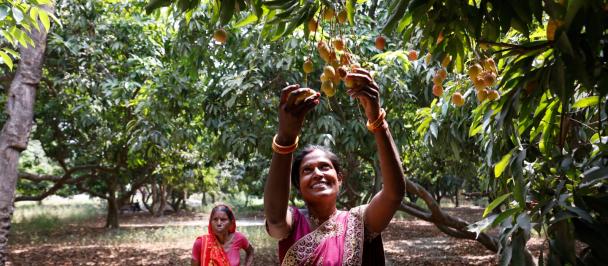- Mrutyunjay Mohapatra and Caitlin Wiesen
A Weather Forecast for a Better Future
March 24, 2024

Weather forecasts have been an integral part of our daily lives for centuries, shaping our societies and economies. From ancient civilizations meticulously recording seasonal patterns to modern day satellite systems giving highly accurate predictions, they symbolize the human endeavour to understand the intricate mechanics of nature.
Today, they are a constant reminder of the impacts of climate change. Last year was the hottest year since we started recording global temperatures, and this threshold is likely to be breached in 2024.
Millions of children around the world face an uncertain future because of the unsustainable lifestyles of preceding generations. Talking about the weather is not small talk anymore, it’s breaking news everyday. It is also the most crucial conversation for our future generations.
The Weather Kids campaign by the United Nations Development Programme (UNDP), in collaboration with the India Meteorological Department (IMD), is bringing young voices to the fore. Launched on the eve of World Meteorological Day, the campaign features children presenting a stark portrayal of the future if urgent climate action is not taken.
Heat waves and storms are disrupting lives and livelihoods, droughts and floods destroying crops, global warming and pollution leaving us vulnerable to diseases. It's a future that no child should have to face, yet it looks increasingly plausible with each passing day that we delay action.
The campaign serves as a powerful reminder that the decisions made today will shape the world these children inhabit tomorrow.
Amidst dire forecasts, there is also hope. The evolution of renewable energy over the past decade has surpassed expectations. According to the International Energy Agency, renewables are set to account for over 90 per cent of global electricity expansion over the next five years, becoming the largest source of global electricity generation by early 2025.
India has been a global leader in this transition. Between 2014 and 2021, the country increased its renewable energy capacity by 250 per cent. Driven by an ambitious national target of achieving 500 gigawatts of non-fossil fuel energy capacity by 2030, India has created a favourable policy ecosystem to attract investors and entrepreneurs, becoming the fourth largest country globally in terms of installed renewable energy capacity.
While expediting our efforts towards green transition, we also need to ensure that communities who are already facing the impacts of climate change are protected from its devastating impacts. By providing timely advice, weather information services play an important role in building climate resilience.
Timely weather forecasts enable farmers to make informed decisions regarding crop planting, irrigation and pest management, optimizing productivity and reducing risks associated with climate variability.
Early warning systems provide critical alerts about potential natural disasters, allowing disaster management agencies and communities to take proactive measures to safeguard lives and minimize damage to infrastructure.
Climate change is one of the biggest crises of our time, but it is also the also the biggest opportunity to change the development paradigm. On World Meteorological Day, let us pledge to build a better world for our future generations.
Mrutyunjay Mohapatra is Director General of Meteorology, India Meteorological Department; and Permanent Representative of India to the World Meteorological Organization.
Caitlin Wiesen is Resident Representative a.i., UNDP India
Original article here

 Locations
Locations